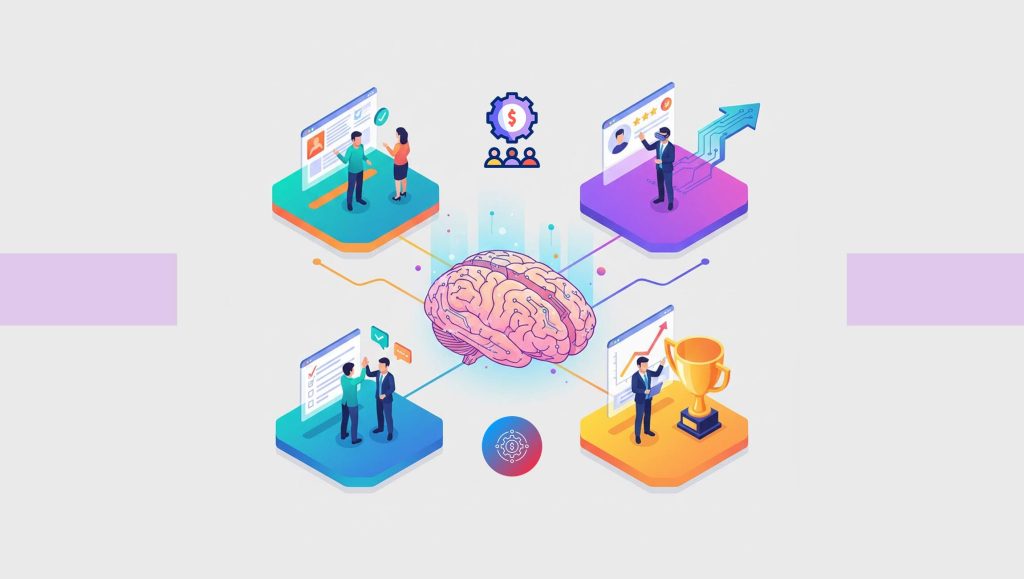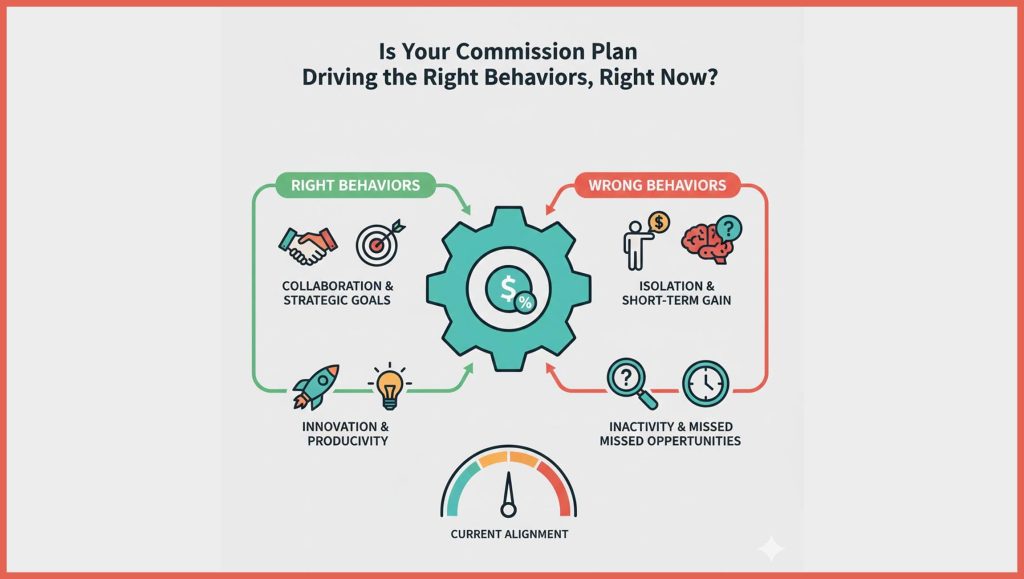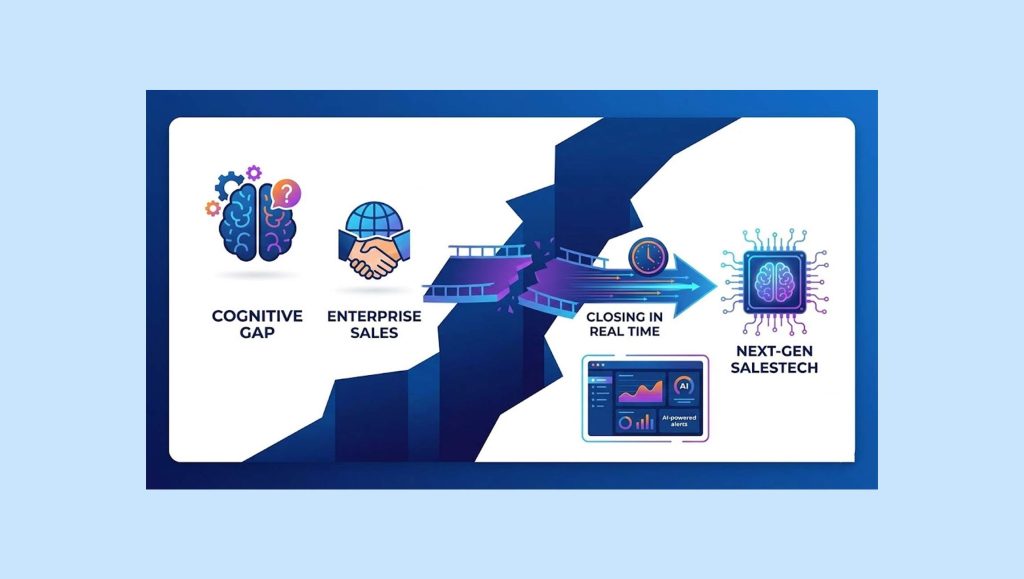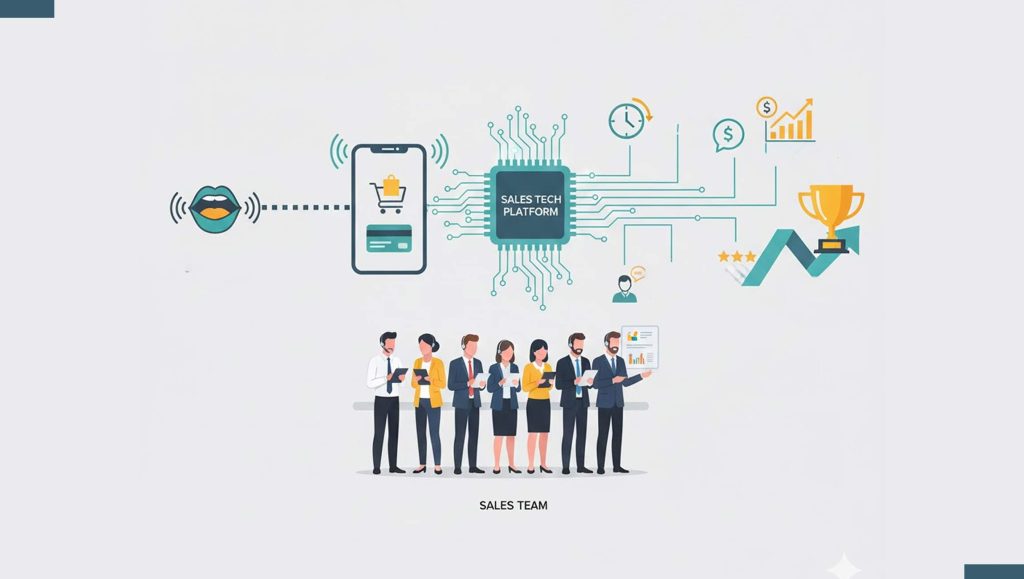Retail and luxury brand leaders may use different terms to describe customers, including “clients” or “guests,” but the most innovative retail and luxury brand leadership teams have 3 common areas of focus when it comes to their customers:
Read More: SalesTechStar Interview With Jill Ransome, Chief Marketing Officer At Tangoe
- They focus on building long-term customer relationships. Innovative leadership teams recognize that customer data is a unique, differentiating, and valuable asset. They believe in using customer data strategically. They collaborate to bridge their customer data silos to create a company-wide customer data strategy. And they empower their teams with access to unified, real-time, preference-rich and connected customer 360 profiles, including consent and communications preferences (eg. SMS text, email or phone). They want to understand the “connections” among customers and their preferred channels, interactions, transactions, brands, products, store locations, websites, devices, and households. These “connections” are important data points for building close customer relationships and delivering exceptional services and experiences across digital and human interactions.
- They focus on transactional consistency and operational optimization. According to Forrester, by 2023, digital will impact 58% of total US retail sales — that is, sales for which customers do at least some part of their shopping journey via a digital touchpoint. In fact, the same Forrester report reveals that many retail and brand professionals believe their omnichannel programs have increased revenue (80%) and have improved profitability (72%). Fifty-two percent reported that their programs have increased their average order values (AOVs).
- They focus on analytical consistency and value optimization. As a result, they use connected customer 360 profiles to power analytics and data science initiatives to get deeper insights about their customers in-the-moment to fuel their innovation roadmap with differentiated products and services. According to Accenture, 71% of retail executives believe digital demographics are expanding the number of ways they deliver products and services. Technology-driven interactions are providing a new lens through which to understand how consumers engage (and want to engage) with technologies. Their digital fingerprints can guide retailers to invest in technology solutions consumers will welcome—and avoid those they won’t.
Read More: The Art Of Persuasion In A COVID-19 World
Challenge: Customer Data Silos Lead to Disconnected Customer Experiences
While there’s a lot of strategic planning underway to improve customer experiences at retail and luxury brands, it too often happens in silos. And there’s usually a huge, gaping hole in that strategy: customer data.
Disconnected, incomplete, incorrect, and outdated customer information is an obstacle to delivering connected, hyper-personalized customer experiences across digital and in-store interactions. While the needs for customer data had grown exponentially, their legacy data management technology was holding them back. Look at the image below. Jonathan Evan Doe is like 75% of customers who want to have a seamless experience with a brand. He wants to use multiple channels to resolve an issue via the web, mobile, phone, or in person visit. He wants to be able to pick up where he left off and avoid having to start over from the beginning each time. But every department at this brand has a different version of Jonathan’s name. Which one is accurate? How can they possibly deliver an exceptional experience to Jonathan when they can’t even get his name right.
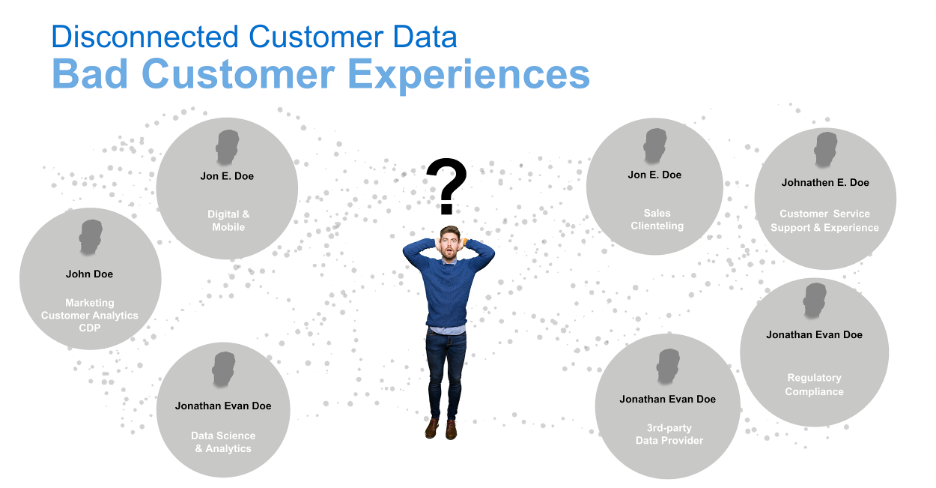 When the COVID-19 pandemic hit, and physical locations closed, it was even more important to get closer to customers and understand their changing needs.
When the COVID-19 pandemic hit, and physical locations closed, it was even more important to get closer to customers and understand their changing needs.
The bottom line is that having access to a single source of truth for real-time customer data across the enterprise improves the entire customer journey including marketing, sales, service, loyalty, digital and mobile experiences. It also improves customer analytics, data science, reporting and it simplifies compliance.
The Importance of a Data Management Platform for Real-time Customer Data
A responsive data management platform can manage billions of unified, real-time, preference-rich and connected customer 360 profiles to power three mission-critical areas for retail and luxury brands to drive results. Take a look at the image below. Not only can this brand now recognize Jonathan Evan Doe across functions, but they also have a lot of valuable information about Jonathan’s preferences. They are able to enrich his profile with 3rd party data, including transactions and interactions, relationships or “connections” such as household relationships, or connections between Jonathan and the products he’s purchased or returned, or his favorite locations or channels. They can add insights from data science and analytics to his profile that they can use for segmentation or to take action in the moment. They can centrally manage consent and communication preferences. And, last but not least, they can tailor the information about Jonathan based on role. Marketing may need different information than the loyalty team needs. With a responsive data management platform in place, it’s easy to create a role-based view of this data.
- Real-time operations at scale for thousands of employees, including scaling for peak times (for example, meeting customer demand during holidays, the launch of a new ad campaign or promotion, or new product launch). It also supports the real-time operational needs and an API approach to power the systems that support digital and human interactions.
- Analytics and data science initiatives to get deeper insights about their customers such as propensity to buy or propensity to churn and make those insights available in the moment of engagement. Brands use this data to fuel their innovation roadmap with differentiated products and services.
- Developing new apps and experiences using an API approach. To make up for the customer data limitations of clienteling apps, some retailers are building relationship apps that are powered by a customer API as mentioned in the luxury retail example above. With an API-first approach, retailers can inject insight and enrich data for any employee, any application, across all touchpoints. In addition to internal apps that help employees, they also use this customer API to power new customer experiences such as digital and mobile experiences. Rather than standing up another customer data silo, they connect these apps to their responsive data management platform.
Read More: Covid-19 Downtime: How Should Auto Marketers Refocus Marketing Efforts?
Measurable Results
The brands that invest in a responsive data management platform that provide access to unified, real-time, preference-rich, and connected customer 360 profiles have a significant competitive advantage. They are achieving substantial returns: $2.2 million in cost, productivity and revenue improvements per year, and a $560,000 lift in profitability per year can be achieved by simply improving consumer identification (*based on analysis of retailers with $5B in annual revenue). Another example showed by using a responsive data management platform, one luxury retail brand empowered 4,900 stylists and sales associates with a new omnichannel selling tool.
The tool is powered by a responsive data management platform, which in turn, allowed stylists and sales associates to deliver hyper-personalized experiences while working from home. The result was 2M customer engagement sessions and $100M in sales in the first few months of launch. They use this same data to power their customer data platform (CDP), which delivered business value in 90 days because they focused on unifying their data and making it accurate first. They are not just making customer data better for marketing. They are making customer data better for everyone. Because they are strategically managing their customer data, they are able to deliver connected customer experiences across digital and human interactions and growing their business.







